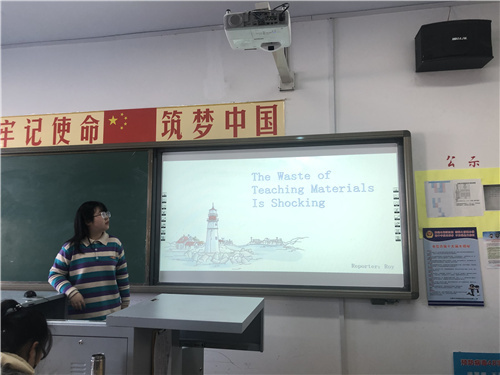
The personage inside course of study points out, our country textbook uses quantity is huge, textbook prints more and more high-grade, if can not recycle use, can cause great waste. Today, free textbooks such as music, art, and sports have been recycled in compulsory education, but in terms of quantity, they are still a fraction of the total.
In a 3500-square-meter workshop of a renewable resources limited company in a central province, a nearly two-story-high, hill-like "Textbook Mountain" stands out, covering almost all subjects in primary and secondary schools. The reporter picks up a junior high school history teaching material to turn over at random, discovers the product to be in good condition, clean and tidy. "There are more than 40 tons of textbooks here, all of which were collected in the past three or four days, and all of them have become waste paper, " said Zhao Dehua, the head of the company. The amount of textbooks collected each month during the peak season is three times what it is now, and most of them are sent to the paper mill.
In the past five years, the retail sales of textbooks and teaching materials for primary and secondary schools, colleges and secondary schools, spare-time education and teaching materials in China averaged about 2.8 billion copies per year, with an amount exceeding 20 billion yuan, according to the General Administration of Press and Publication. If these materials are recycled for one year, the savings can be used to build about 40,000 hope primary schools.
What happened to the textbook that was recycled? May to July of each year is the waste collection station to buy teaching materials season. "In the graduation season, many graduates sell the teaching materials they have accumulated for many years, at an average of 0.5 yuan per catty, " Zhao said. Most of the teaching materials are used to produce recycled paper, but the process is complicated and the cost is even higher than that of raw pulp.
业内人士指出,我国教材使用量巨大,教材印刷越来越高档,如果不能回收利用,会造成极大的浪费。如今,音乐、艺术和体育等免费教科书在义务教育中得到循环使用,但从数量上看,它们仍然只是总量的一小部分。
在中部省份一家再生资源有限公司3500平方米的车间里,矗立着一座近两层楼高、像小山一样的“教科书山”,几乎覆盖了中小学的所有学科。记者随手拿起一份初中历史教材翻看,发现产品完好,干净整洁。“这里有40多吨的教科书,都是在过去的三四天里收集的,都变成了废纸,”该公司的负责人赵德华说。旺季每个月收集的教科书数量是现在的三倍,其中大部分都被送到了造纸厂。
在过去的五年里,零售销售的中小学课本和教材,大学和中学,业余教育和教材在中国每年平均约28亿册,金额超过200亿元,按照新闻出版总署。如果回收这些材料一年,节省下来的钱可以用来建造大约4万所希望小学。
被回收利用的教科书怎么了?每年的5月至7月是垃圾收集站购买教材的季节。赵说:“在毕业季,许多毕业生会出售积攒多年的教材,平均每斤卖0.5元。”大部分教材用于生产再生纸,但生产过程复杂,成本甚至高于原浆。

